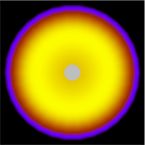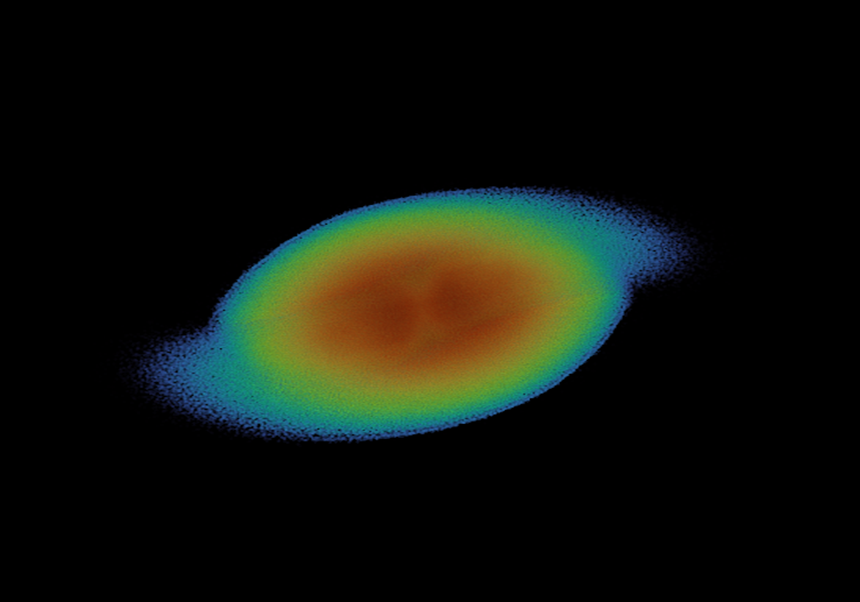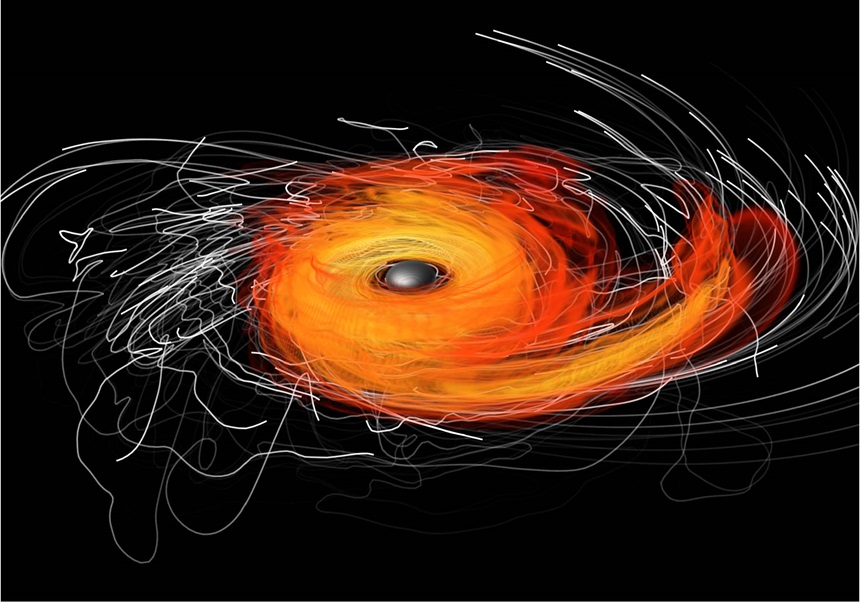
Exposicions Tesis. Divendres 13 de juliol, a les 12:00 h, al Saló d'Actes de la Facultat de Física "Lise Meitner", Burjassot, tindrà lloc la lectura de la Tesi Doctoral realitzada per Nicolás Sanchis, sota la direcció del doctor José Antonio Font Roda, professor titular d'este departament.
RESUM:
The recent detections of gravitational waves are opening a new window to the Universe. The nature of black holes and neutron stars may now be unveiled, but gravitational radiation may also lead to exciting discoveries of new exotic compact objects, oblivious to electromagnetic waves. In this thesis, I have investigated three main topics involving fundamental scalar and vector bosonic fields coupled to gravity within General Relativity and under the assumption of spherical symmetry: (i) quasistationary configurations of real scalar fields around Schwarzschild black holes as scalar field dark matter models, (ii) the superradiant instability and the formation of charged hairy black holes, and (iii) bosonic stars. These systems could have important astrophysical relevance, if ultralight bosonic fields exist in Nature. In 2012, the first non-gauge boson particle, the Higgs boson, was discovered in the Large Hadron Collider (LHC).
The main work in this thesis deals with numerical-relativity evolutions of bosonic fields in the strong-field regime of gravity. Recently, scalar field configurations around black holes have been studied in the linearized regime, taking the spacetime as a background. It was found that very long-lived scalar field quasibound states may form around the black hole. To investigate time evolutions in highly dynamical scenarios, it is required to perform numerical simulations of the fully non-linear Einstein-Klein-Gordon or Einstein-Proca coupled systems. To this aim I have extended numerical-relativity codes in 1D and 3D using spherical coordinates that solve the relativistic hydrodynamics equations coupled to the Einstein equations, implementing the fundamental equations describing the bosonic fields. Firstly, I have carried out numerical evolutions of scalar fields around black holes, taking into account the back-reaction of the field onto the gravitational field dynamics. Therefore, the spacetime could dynamically change: mass growth due to the absorption of part of a self-gravitating scalar field or from the adiabatic accretion of some other form of matter, or black hole formation from the gravitational collapse of a polytropic star described with an equation of state (EOS) similar to that of a supermassive star. In all cases, my non-linear simulations have revealed a well-determined oscillating frequency that pointed out to the presence of the quasibound states described in the linearized literature. Another interesting phenomena involving bosonic fields and black holes is the superradiant instability, that can be triggered by the scattering of the field off the black hole. A bosonic field may then extract energy from the black hole and, if a trapping mechanism is introduced, it can grow exponentially. Building on previous numerical works in the linearized regime, I have studied the instability for a charged scalar field around a Reissner-Nordström (charged) black hole in a cavity, showing that the endpoint is a solution in which the black hole and the bosonic field are in equilibrium, i.e. a hairy black hole. Moreover, I found that the collapse of charged scalar field solitons in a cavity may also form these solutions. Finally, I have considered equilibrium models of bosonic stars as self-gravitating, everywhere non-singular, horizonless Bose-Einstein condensates of massive fields, namely boson stars with and without self interaction and Proca stars. These compact objects are regarded as black hole mimickers as they only interact through gravity. By performing accurate numerical simulations, I have observed that Proca stars resemble in many ways its scalar cousins, even with a self-interaction term. A separation between stable and unstable configurations occuring at the solution with maximal ADM mass has been indicated by previous results from linear perturbation theory. My simulations not only confirm this result but furthermore they show that the different outcomes of unstable models, namely migration to the stable branch, total dispersion of the scalar field, or collapse to a Schwarzschild black hole, are present for both fields. In the latter case, a field remnant lingers outside the horizon, forming a quasibound state. A further parallelism can be established with neutron stars, for which the collapse and the migration, but not the dispersion, has also been found numerically.
Regarding the numerical-relativity framework, in this thesis I have modified the CCZ4 formulation, which is a conformal and traceless decomposition of the Einstein equations, to make its evolution equations suitable for curvilinear coordinates. I have found that the Hamiltonian constraint violations could be reduced by one to three orders of magnitude for non-vacuum spacetimes with respect to the standard BSSN formulation. For Schwarzschild black holes, however, the results were not significantly better.
This thesis also contains some miscellaneous research work on two topics, namely slowly-rotating (fermionic) stars and my contribution to the Virgo Collaboration. The latter has consisted in producing gravitational waveforms from numerical simulations of collapsing stars described by a non-convex equation of state (EOS). For the former I have studied numerically the recently amended Hartle's model of slowly-rotating stars within perturbation theory, which correctly takes into account density discontinuities in the surface of the star for the correction of the mass, dM, for different EOS. I have helped to develop a numerical code providing initial models of rotating stars for a number of EOS, beyond polytropes and the constant-density idealization. We were able to determine and include the universality of dM in the so-called I-Love-Q relations.
Imatges:















